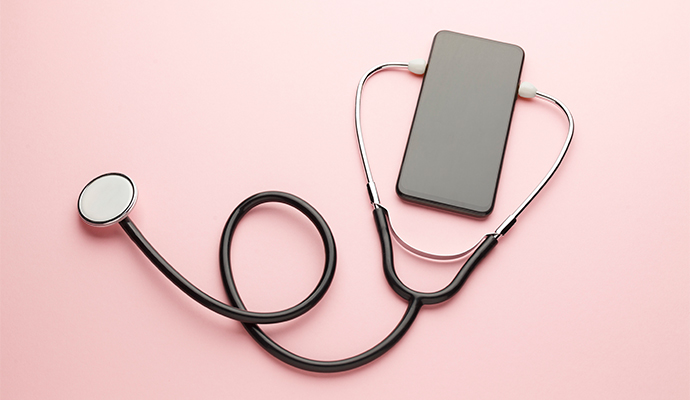79% of Patients Want Call, Text to Signal Start of Telehealth Visit
Most patients, including those with chronic illnesses, wanted to be notified via call or text that their virtual visit was about to begin rather than stand by in a virtual waiting room, per a new poll.

Source: Getty Images
- Though patients have previously made their preference for virtual waiting rooms over traditional ones known, new survey results show that a majority of telehealth patients would rather just be notified by a text or call when their doctor is ready to see them.
Doximity, an online networking service and telehealth platform for healthcare professionals, conducted the new survey last November, polling 2,000 US adults, of whom 1,000 identified as having a chronic illness.
As telehealth becomes integrated into care delivery, questions around patient preferences arise. The survey helps shed some light, showing that 79 percent of patients would prefer a call or text letting them know that their doctor is ready to see them versus having to wait in a virtual waiting room. Even among chronic illness patients only, an overwhelming majority (81 percent) would prefer to receive a call or text.
Patients also displayed a strong preference for familiarity with a provider. Overall, 83 percent of patients surveyed said they would wait one to three days to see their current doctor rather than seeing a new physician immediately.
With regard to preferred devices for telehealth, mobile devices came out on top. Over 59 percent of respondents chose mobile devices as their preferred one for conducting telehealth visits, while only 38 percent said they preferred computers.
"This suggests that patients may want to communicate with their doctor in the same way they communicate with family, friends, and employers — using their mobile devices," the report states.
Further, mobile phones are the most widely available device for people across racial groups.
About 83 percent of White, 78 percent of Latinx, 73 percent of Asian, and 70 percent of Black respondents said they had a smartphone. But those figures dropped to 67 percent, 56 percent, 68 percent, and 57 percent for White, Latinx, Asian, and Black respondents, respectively, when asked whether they owned a laptop or desktop computer.
Further, there are still significant barriers to telehealth access, including a lack of reliable broadband connectivity, among racial minorities and low-income groups.
While only 10 percent of White respondents said they didn't have broadband internet at home, 12 percent of Black and 16 percent of Latinx respondents said the same.
Similarly, 19 percent of patients with household incomes below $25,000 said they didn't have broadband internet access at home compared with only 8 percent of those with household incomes greater than $100,000.
"Given that patients from lower-income backgrounds and patients from historically marginalized groups are more reliant on smartphones for telemedicine access at home, healthcare systems can promote health equity by investing in mobile-first solutions that optimize for potentially slower, variable internet speeds," the report states.
But, despite hurdles, a majority of respondents (73 percent) said they planned to receive some or all of their care via telehealth after the COVID-19 pandemic ended. That figure jumped to 80 percent among patients with chronic illnesses.
Even among racial minorities, the desire to continue using telehealth remains high. About 77 percent of Asian, 73 percent of Latinx, and 74 percent of Black respondents said they plan to use telehealth after the pandemic ends.
The ongoing popularity of telehealth is bolstered by a rise in the proportion of respondents who reported that telehealth provides the same or better quality of care as compared with in-person visits — from 40 percent in a 2020 Doximity survey to 55 percent in 2021.
